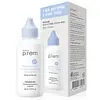What's inside
What's inside
 Key Ingredients
Key Ingredients

 Benefits
Benefits

 Concerns
Concerns

 Ingredients Side-by-side
Ingredients Side-by-side

Water
Skin ConditioningGlycerin
HumectantButylene Glycol
HumectantEthylhexyl Palmitate
EmollientCetyl Ethylhexanoate
Emollient1,2-Hexanediol
Skin ConditioningSorbitol
HumectantPanthenol
Skin ConditioningPolyglyceryl-10 Oleate
Skin ConditioningCeramide NP
Skin ConditioningMadecassoside
AntioxidantAnthemis Nobilis Flower Extract
MaskingCarbomer
Emulsion StabilisingHydrogenated Lecithin
EmulsifyingTromethamine
BufferingDipropylene Glycol
HumectantEthylhexylglycerin
Skin ConditioningCetearyl Olivate
Disodium EDTA
Sorbitan Olivate
EmulsifyingCaprylic/Capric Triglyceride
MaskingWater, Glycerin, Butylene Glycol, Ethylhexyl Palmitate, Cetyl Ethylhexanoate, 1,2-Hexanediol, Sorbitol, Panthenol, Polyglyceryl-10 Oleate, Ceramide NP, Madecassoside, Anthemis Nobilis Flower Extract, Carbomer, Hydrogenated Lecithin, Tromethamine, Dipropylene Glycol, Ethylhexylglycerin, Cetearyl Olivate, Disodium EDTA, Sorbitan Olivate, Caprylic/Capric Triglyceride
Water
Skin ConditioningAzelaic Acid
BufferingButylene Glycol
HumectantDipropylene Glycol
Humectant1,2-Hexanediol
Skin ConditioningPropanediol
SolventCaprylic/Capric Triglyceride
MaskingPanthenol
Skin ConditioningCetyl Ethylhexanoate
EmollientButylene Glycol Dicaprylate/Dicaprate
EmollientSpirulina Platensis Extract
Skin ProtectingRhodomyrtus Tomentosa Fruit Extract
HumectantArtemisia Vulgaris Extract
Skin ConditioningCentella Asiatica Extract
CleansingSpinacia Oleracea Leaf Extract
Skin ConditioningBrassica Oleracea Italica Extract
AstringentTapioca Starch
Allantoin
Skin ConditioningBetaine
HumectantSodium Polyacryloyldimethyl Taurate
Emulsion StabilisingArginine
MaskingEthylhexyl Palmitate
EmollientSorbitan Isostearate
EmulsifyingAcrylates/C10-30 Alkyl Acrylate Crosspolymer
Emulsion StabilisingDextrin
AbsorbentCarthamus Tinctorius Flower Extract
Skin ConditioningGardenia Florida Fruit Extract
Skin ConditioningPolyacrylate-13
Hydrogenated Polyisobutene
EmollientPolyglyceryl-10 Laurate
Skin ConditioningCaprylyl Glycol
EmollientWater, Azelaic Acid, Butylene Glycol, Dipropylene Glycol, 1,2-Hexanediol, Propanediol, Caprylic/Capric Triglyceride, Panthenol, Cetyl Ethylhexanoate, Butylene Glycol Dicaprylate/Dicaprate, Spirulina Platensis Extract, Rhodomyrtus Tomentosa Fruit Extract, Artemisia Vulgaris Extract, Centella Asiatica Extract, Spinacia Oleracea Leaf Extract, Brassica Oleracea Italica Extract, Tapioca Starch, Allantoin, Betaine, Sodium Polyacryloyldimethyl Taurate, Arginine, Ethylhexyl Palmitate, Sorbitan Isostearate, Acrylates/C10-30 Alkyl Acrylate Crosspolymer, Dextrin, Carthamus Tinctorius Flower Extract, Gardenia Florida Fruit Extract, Polyacrylate-13, Hydrogenated Polyisobutene, Polyglyceryl-10 Laurate, Caprylyl Glycol
 Reviews
Reviews

Ingredients Explained
These ingredients are found in both products.
Ingredients higher up in an ingredient list are typically present in a larger amount.
1,2-Hexanediol is a synthetic liquid and another multi-functional powerhouse.
It is a:
- Humectant, drawing moisture into the skin
- Emollient, helping to soften skin
- Solvent, dispersing and stabilizing formulas
- Preservative booster, enhancing the antimicrobial activity of other preservatives
Butylene Glycol (or BG) is used within cosmetic products for a few different reasons:
Overall, Butylene Glycol is a safe and well-rounded ingredient that works well with other ingredients.
Though this ingredient works well with most skin types, some people with sensitive skin may experience a reaction such as allergic rashes, closed comedones, or itchiness.
Learn more about Butylene GlycolThis ingredient is an emollient, solvent, and texture enhancer. It is considered a skin-softener by helping the skin prevent moisture loss.
It helps thicken a product's formula and makes it easier to spread by dissolving clumping compounds.
Caprylic Triglyceride is made by combining glycerin with coconut oil, forming a clear liquid.
While there is an assumption Caprylic Triglyceride can clog pores due to it being derived from coconut oil, there is no research supporting this.
Learn more about Caprylic/Capric TriglycerideCetyl Ethylhexanoate is an emollient ester. It comes from cetearyl alcohol and 2-ethylhexanoic acid.
Cetyl Ethylhexanoate is an emollient that adds a velvety feel to skin without being greasy or oily. Emollients help trap moisture into your skin, keeping your skin soft and hydrated.
Dipropylene Glycol is a synthetically created humectant, stabilizer, and solvent.
This ingredient helps:
Dipropylene glycol is technically an alcohol, but it belongs to the glycol family (often considered part of the ‘good’ alcohols). This means it is hydrating and gentle on skin unlike drying solvent alcohols like denatured alcohol.
As a masking agent, Dipropylene Glycol can be used to cover the smell of other ingredients. However, it does not have a scent.
Studies show Dipropylene Glycol is considered safe to use in skincare.
Learn more about Dipropylene GlycolEthylhexyl Palmitate, also known as octyl palmitate, is created from 2-ethylhexyl alcohol and palmitic acid. It is a fatty acid ester.
The fatty acid content of Ethylhexyl Palmitate makes it an emollient. Emollients help soften and hydrate your skin by trapping moisture within.
Ethylhexyl Palmitate is also used to help improve the texture of cosmetics. It helps other ingredient dissolve in products and help disperse ingredients more evenly.
You'll likely find this ingredient in sunscreen, as it is often used to mix UV-blocking ingredients such as avobenzone and ethylhexyl triazone.
It can also help stabilize the fragrances in a product as a fragrance fixative.
Ethylhexyl Palmitate can be used to substitute mineral oil.
Due to its high fatty acid content, it may not be fungal-acne safe.
Learn more about Ethylhexyl PalmitatePanthenol is a common ingredient that helps hydrate and soothe the skin. It is found naturally in our skin and hair.
There are two forms of panthenol: D and L.
D-panthenol is also known as dexpanthenol. Most cosmetics use dexpanthenol or a mixture of D and L-panthenol.
Panthenol is famous due to its ability to go deeper into the skin's layers. Using this ingredient has numerous pros (and no cons):
Like hyaluronic acid, panthenol is a humectant. Humectants are able to bind and hold large amounts of water to keep skin hydrated.
This ingredient works well for wound healing. It works by increasing tissue in the wound and helps close open wounds.
Once oxidized, panthenol converts to pantothenic acid. Panthothenic acid is found in all living cells.
This ingredient is also referred to as pro-vitamin B5.
Learn more about PanthenolWater. It's the most common cosmetic ingredient of all. You'll usually see it at the top of ingredient lists, meaning that it makes up the largest part of the product.
So why is it so popular? Water most often acts as a solvent - this means that it helps dissolve other ingredients into the formulation.
You'll also recognize water as that liquid we all need to stay alive. If you see this, drink a glass of water. Stay hydrated!
Learn more about Water